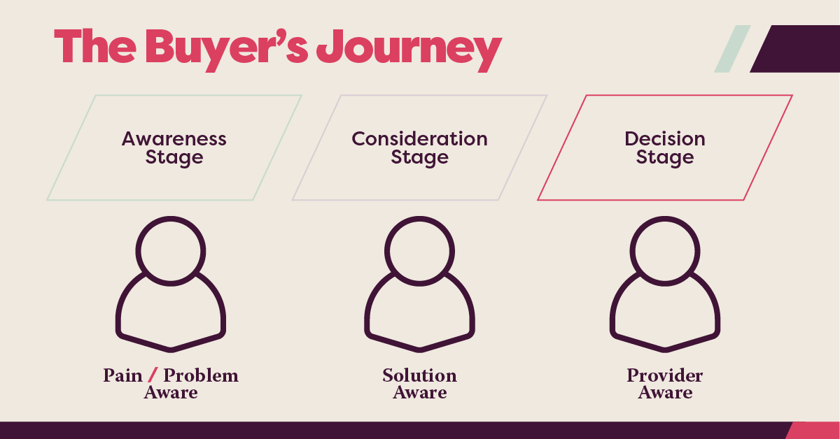
Though “Inbound Marketing” wasn’t officially coined until 2005 by HubSpot’s co-founder Brian Halligan, the practices and theories have been around for over a century. In 1845, legendary Tiffiany and Co. released a “Blue Book” helping shoppers make their purchases. Chances are, you too, are already implementing some form of inbound methodology - whether that’s sending out a catalog, a client newsletter, or publishing helpful how-to content.
But understanding what inbound marketing is and the philosophy behind it can help you make stronger strategic decisions to attract customers. So, let’s dig in.
What is inbound marketing?
The core principle of inbound marketing today is the same as it was for Tiffany and Co. over a hundred years ago: attract your audience by providing content and experiences that are valuable to them. By offering this value, you are able to interact with your audience at every step of their buying journey in order to nurture them through that pipeline. This is broken down across your company as you attract new visitors, engage prospects, and delight customers, so they will keep coming back and become champions of your brand.
The buyer's journey
If we break inbound methodology down even more, we can look at specific stages of a prospect’s lifecycle and use these stages to inform strategy and help nurture prospects through our marketing funnel.

The awareness stage. In the awareness stage prospects are still trying to put a name to their problem. They are assessing symptoms and looking for a diagnosis or are posed with an opportunity but not sure what to make of it. Probably the best Awareness Stage marketing experience out there? Web MD’s symptom checker.
A savvy marketer is interested in capturing their audience in the awareness stage because, even though they aren’t ready to make a purchase, they are primed to see your brand as a thought leader and an answer to their problems. Even if they don’t move forward today, they may come back later when ready to take the next step.
The consideration stage. Once a prospect has reached the consideration stage, they have clearly defined the challenges they face and are now seeking solutions. Now, their purpose is to figure out what next step to take. For example, a small business owner may now realize that doing his own taxes is draining his time, but does he hire an in-house accountant or outsource with software? “What do I do about my problems?” is the question buyers ask in the consideration stage.
The decision stage. At the decision stage of the buyer’s journey, buyers know what they need, but now they’re looking for the best person for the job. At this point, buyers are shopping around and comparing your services to your competitors.
And the key to moving prospects from one stage to the next? A clear call-to-action that helps them grab more of what you’re offering.
Inbound in action
Let’s take a look at inbound at work. Say you represent a company called Old Soul Shoe Repair. How can you use inbound methodology to appeal to each stage in the buyer’s journey?
Awareness
- Writing articles that help readers know they need to consider some upgrades in the footwear department. Something like “Can worn-out shoes cause joint pain?” or “How to keep white sneakers clean.”
- Sharing videos on social media about how to know when it’s time to replace your shoes.
Consideration
- Writing articles that help prospects realize shoe repair is the solution. Articles like “Can high heels be repaired?” and “Should I repair or replace my favorite boots?” or “How much does shoe repair cost?”
- Communicating your company’s values with an infographic about how replacing shoes is more environmentally friendly than buying new.
- Create a shoe care ebook site visitors can download in exchange for their email addresses.
Decision
- A drip email campaign to site visitors educating them about how your brand is unique. For example, calling out your money-back guarantee or commitment to humanely sourced leather.
- Providing an incentive to try your services - like a free shoe shine or repair up to a certain dollar amount.
- Using testimonials or award badges on your website, social media, and landing pages to provide social proof of your brand’s trustworthiness.
Why implement inbound methodology?
So, now you know how inbound works, but why go through the effort? Isn’t it easier to just run ads? Well, you know the age-old saying - you can lead a horse to water, but you can’t make it drink? This demonstrates the problems with relying on an entirely outbound marketing strategy. With outbound tactics, advertising interrupts your audience, and there’s not much reason to engage with it if they’re not thirsty.
By offering experiences that are valuable and designed for your audience, you are able to capture their attention - and more importantly - their interest by solving problems. This way you’re able to connect with buyers even before they’re ready to start shopping and keep them coming back to your company for expertise.
Where does inbound marketing make a difference?
Inbound has found a particularly cozy home in the business-to-business (and by extension, business-to-government) world. With longer buying cycles and a customer with a more complex set of needs, inbound marketing allows B2B companies to nurture those relationships. Smart B2B marketers collaborate and troubleshoot with their prospects, building a partnership around their problems and opportunities.
That’s not to say inbound has no place in the direct-to-consumer world. Far from it. Let’s remember the example of Tiffany’s Blue Book. If you’ve watched a magical skincare transformation on social media, received an enewsletter from your favorite tackle shop, or read a blog to help you understand when it’s time to replace your cowboy boots, congratulations - you’ve been inbounded.
When is inbound the right tactic?
Okay, we know you’re wondering about ROI. After all, inbound marketing might sound like a hefty upfront investment - content isn’t exactly cheap to produce. Wouldn’t ads or more traditional marketing methods be a more surefire investment?
You’re right about a few things. Content creation isn’t a time or treasures cost to be overlooked, and it can take a bit of time for inbound to start gaining traction. But, as a largely organic and digital strategy, inbound gets contacts to your sales team at a considerably lower cost-per-lead, plus, those leads have already had experiences with your brand and are better nurtured to buy.
And, even when it comes to the cost of content, each piece you develop can be used for more than one purpose. Blogs can be broadcast over social media, combined into an ebook, and so on and so forth. Overall, if you’re looking to generate leads at a lower CPL, inbound is right for you.
Who stands to benefit and who gets the job done?
The best part about inbound? Marketers and the brands they work for aren’t the only ones who benefit. When inbound is done right, the buyer doesn’t feel the pressure of a sales pitch, and the content or experience offered cuts through the static of advertising we’ve all become numb to. Simply put, why scream into the oversaturated void when you could simply reach out your hand?
At Vye, we believe that inbound methods are the key to seeing marketing as a measurable growth investment. Each of our accounts is equipped with a dedicated inbound specialist to review the hard data, get to know your brand, and help your company grow. Want to learn more about inbound form Vye? Give us a ring, because we love to talk about it.

